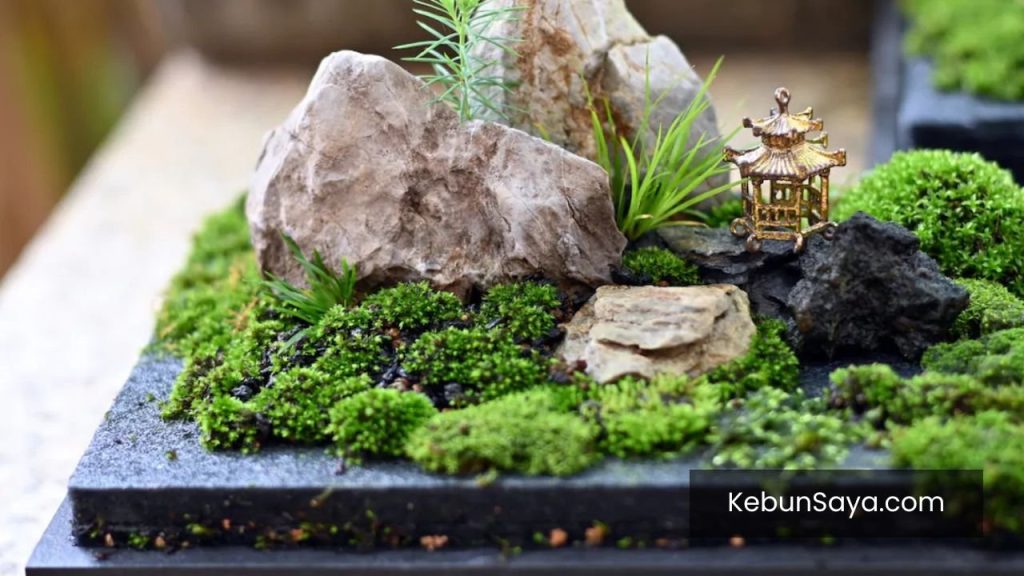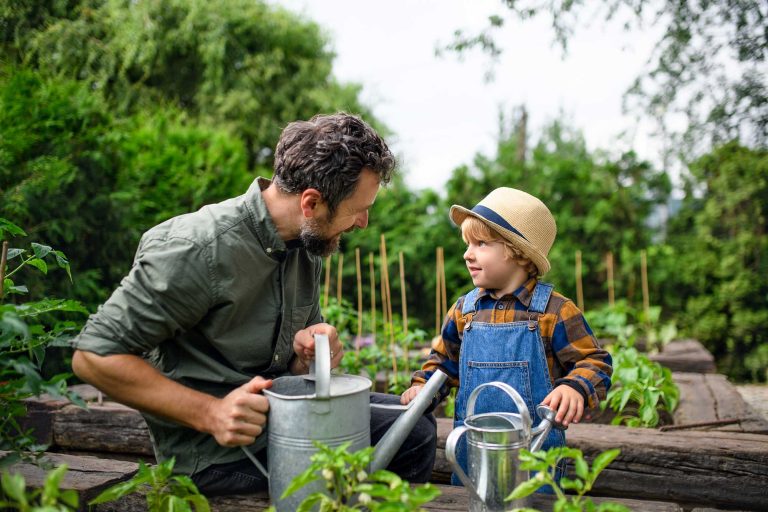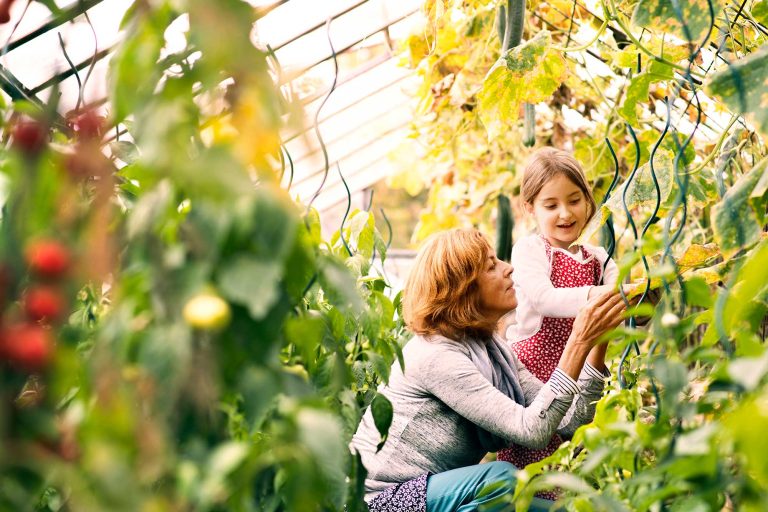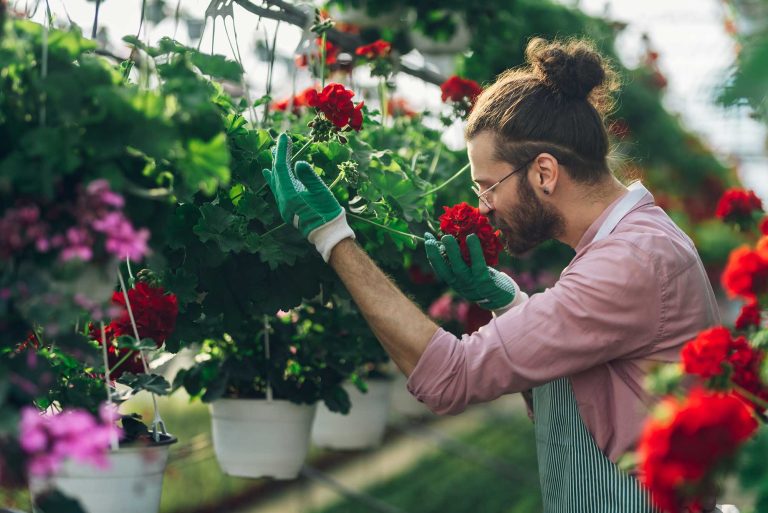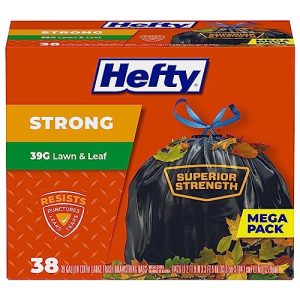Imagine transforming a corner of your home into a lush, green sanctuary that requires minimal effort yet offers endless beauty. If you’ve ever admired the serene elegance of moss-covered landscapes, why not bring that tranquility indoors with your very own moss garden?
Starting an indoor moss garden isn’t just an opportunity to elevate your interior decor; it’s a chance to reconnect with nature, reduce stress, and boost your mood. You might be wondering if this is the right choice for your living space or if it’s as easy as it sounds.
The truth is, moss gardens are incredibly low-maintenance, making them perfect for anyone, regardless of gardening experience. Plus, with the right techniques, you can create an enchanting oasis that captivates every visitor. Curious to learn how you can cultivate your indoor moss garden and impress guests with your green thumb? Read on to discover the step-by-step process that will help you create a stunning, serene moss garden that transforms your home into a peaceful retreat.

Credit: kebunsaya.com
Benefits Of An Indoor Moss Garden
Creating an indoor moss garden can be a delightful venture, offering unique benefits that appeal to both novice and experienced gardeners. Moss gardens are not only aesthetically pleasing but also provide a tranquil atmosphere, enhancing your living space in unexpected ways. Let’s explore how these miniature green landscapes can enrich your home environment.
Cost-effective And Low Maintenance
An indoor moss garden is surprisingly economical. Moss requires minimal care, making it an ideal choice for those who lack the time or expertise to tend to more demanding plants. You don’t need expensive tools or fertilizers; just a few basic materials will do the trick.
Imagine the ease of maintaining a garden that doesn’t demand regular watering or trimming. Moss thrives on minimal water and indirect sunlight, allowing it to flourish even in the shadiest corners of your home.
Boosts Air Quality
Did you know that moss can act as a natural air purifier? It absorbs pollutants and releases fresh oxygen, helping to improve the air quality in your home. Breathing cleaner air can make you feel more energized and focused.
Having a lush green patch indoors can be particularly beneficial in urban settings where air pollution is a growing concern. Your moss garden can serve as a small but effective step towards a healthier lifestyle.
Promotes Relaxation And Well-being
The gentle, soothing green of moss can have a calming effect on your mind. It’s like bringing a piece of serene nature into your home, helping you unwind after a stressful day. The soft texture and vibrant color can evoke a sense of peace and tranquility.
Consider the moments when you simply need to pause and catch your breath. Your moss garden can be that perfect spot to meditate or reflect, enhancing your mental well-being.
Creative Expression And Personalization
Moss gardens are highly customizable. You can arrange them in terrariums, on stones, or even in decorative bowls. This flexibility allows you to express your creativity and style, making each garden uniquely yours.
Why not challenge yourself to design a miniature landscape that tells a story or represents your personality? This personal touch can make your moss garden not just a plant arrangement, but a piece of art.
Encourages Sustainability
By cultivating an indoor moss garden, you’re contributing to sustainability. Moss is an eco-friendly plant that doesn’t require pesticides or heavy irrigation. It naturally promotes biodiversity by creating habitats for small organisms.
Reflect on the impact your gardening choices have on the planet. A moss garden can be a small yet significant step toward a greener, more sustainable lifestyle.
Choosing The Right Moss
Selecting the right moss is crucial for a thriving indoor moss garden. Consider light conditions and humidity levels to ensure your moss grows well. Research various moss types to find the perfect match for your environment.
Choosing the right moss is crucial for creating a thriving indoor moss garden. Each type of moss has its unique characteristics, and some are better suited for indoor environments than others. By selecting the right moss, you can ensure that your indoor garden is not only beautiful but also easy to maintain.Types Of Moss
There are several types of moss that you can consider for your indoor garden: – Sheet Moss (Hypnum): Known for its flat, carpet-like appearance, sheet moss is perfect for covering large areas. It thrives in shady spots and requires minimal maintenance. – Cushion Moss (Leucobryum): This moss forms small, cushion-like mounds that add texture to your garden. It’s ideal for creating a focal point or adding variety to your moss collection. – Fern Moss (Thuidium): With its delicate, fern-like fronds, fern moss adds a touch of elegance. It grows well indoors and can be used to create intricate patterns. Understanding the types of moss available will help you make informed decisions about what suits your space and aesthetic preferences.Best Moss For Indoors
Not all mosses are created equal when it comes to indoor gardening. Some moss types thrive better indoors due to their adaptability and low maintenance needs: – Java Moss (Taxiphyllum barbieri): This versatile moss is popular in aquariums but does well in terrariums too. It’s hardy, grows quickly, and can adapt to various humidity levels. – Mood Moss (Dicranum scoparium): If you want a lush, vibrant look, mood moss is an excellent choice. It retains moisture well, making it suitable for indoor settings with moderate humidity. – Sphagnum Moss: Known for its excellent water retention, sphagnum moss is great for creating a humid environment. It’s often used as a base layer in terrariums. Choosing the best moss for indoors is about matching the moss’s natural habitat to your indoor environment. Consider the light, humidity, and space available in your home. When I started my own moss garden, I experimented with several types before settling on mood moss for its rich green hue and resilience. This personal touch not only enhanced my space but also made the gardening process enjoyable. Have you thought about which type of moss would thrive in your home? Selecting the right moss can transform your indoor garden into a serene oasis.Gathering Supplies
Starting an indoor moss garden is a delightful way to bring a touch of nature into your home. However, before you can create your own little green sanctuary, gathering the right supplies is crucial. The right tools and containers will set the foundation for a thriving moss garden, ensuring you have everything you need to nurture your plants successfully.
Essential Tools
To begin your moss garden, you’ll need a few basic tools. These are not only essential but also easy to find. A spray bottle is a must-have to keep your moss moist, as moss prefers a humid environment.
You’ll also need a pair of tweezers or a small gardening tool to carefully place the moss without damaging it. A magnifying glass can be surprisingly useful for inspecting your moss closely, ensuring it’s healthy and free from pests.
- Spray bottle for misting
- Tweezers or small gardening tool for placement
- Magnifying glass for inspection
Containers And Vessels
The choice of container can dramatically affect the aesthetic and health of your moss garden. Glass containers like terrariums are popular because they maintain humidity levels and allow you to admire your garden from all angles.
Think creatively when selecting your container. Use a recycled jar, an antique bowl, or even a shallow dish as the base for your garden. Ensure it has enough depth to accommodate the moss and any decorative elements you might want to add.
- Glass terrariums for humidity control
- Recycled jars or antique bowls for unique aesthetics
- Shallow dishes for creative designs
As you gather your supplies, consider how each tool and container will contribute to the beauty and maintenance of your indoor moss garden. Are there other tools you might need for your specific design? The right supplies can make all the difference in creating a stunning, low-maintenance indoor oasis.
Preparing Your Space
Creating an indoor moss garden begins with selecting a shady spot away from direct sunlight. Ensure the area is clean and moisture-friendly to support moss growth.
Creating an indoor moss garden can be an enchanting addition to your home, but it starts with thoughtful preparation of your space. The charm of moss lies in its simplicity and tranquility, yet it requires just the right environment to thrive. This preparation phase is crucial to ensure your moss garden flourishes beautifully indoors. Let’s explore how to get your space ready by considering two critical factors: light and humidity.Light Requirements
Mosses generally prefer low to medium light conditions. Unlike most plants, they don’t thrive under direct sunlight. Position your moss garden near a north-facing window or under fluorescent lights for best results. If your space is too bright, consider using sheer curtains to diffuse the light. Mosses can also do well in dim corners, making them perfect for adding greenery to spaces that typically don’t support other plants. Have you checked how the light changes throughout the day in your chosen spot?Humidity Considerations
Mosses love humidity, as it mimics their natural environment. Indoor spaces can often be too dry, especially in air-conditioned or heated rooms. To boost humidity, consider placing a small bowl of water near your moss garden or misting it regularly. A terrarium can also help maintain a humid environment if you live in a particularly dry area. Grouping your moss with other plants can create a micro-climate that keeps moisture levels more constant. Have you ever noticed how lush the moss looks after a good misting? By carefully setting up your space with these light and humidity considerations, you create a welcoming home for your indoor moss garden. These small adjustments can make a big difference in the vitality and appearance of your moss.Planting Your Moss
Create an indoor moss garden by choosing a shallow container with good drainage. Fill it with a layer of soil and mist it regularly. Position the moss in indirect light to thrive beautifully.
Starting an indoor moss garden brings nature inside your home. Moss is low-maintenance and adds a soothing touch. Planting moss is simple and rewarding. Follow these steps to create a lush, green garden.Substrate Preparation
Choose a suitable container for your moss. It can be a glass jar, a shallow tray, or a terrarium. Ensure it has good drainage to prevent waterlogging. Next, gather your substrate materials. A mixture of soil, sand, and pebbles works well. Spread a thin layer of pebbles at the bottom. This layer aids drainage and prevents root rot. On top, add a layer of sand. Sand helps with water retention and stability. Finally, add a thin layer of soil. This provides nutrients and a base for the moss to anchor.Arranging Moss Pieces
Select healthy moss pieces for your garden. They should be vibrant green with no brown spots. Gently place each piece on the prepared substrate. Press them lightly to ensure contact with the soil. Arrange the moss pieces creatively. You can create patterns or cover the entire surface. Leave small gaps between pieces for growth. Mist the moss with water using a spray bottle. This keeps the moss moist and helps it settle into the substrate. Maintain your moss garden by misting it regularly. Keep it out of direct sunlight to prevent drying. With proper care, your indoor moss garden will thrive and add a serene ambiance to your space.
Credit: kebunsaya.com
Caring For Your Moss Garden
Once you’ve set up your indoor moss garden, the journey doesn’t end there. Caring for your moss garden is crucial to ensure it thrives and remains vibrant. With the right techniques and attention, your moss can become a lush green oasis in your home. Let’s delve into the essentials of maintaining your moss garden.
Watering Techniques
Moss is unique in its water needs compared to other plants. Instead of soaking it, aim for a gentle misting. A spray bottle can be your best friend here. Mist your moss lightly every few days to keep it moist, but not drenched.
Consider the environment of your home. Is it dry or humid? The humidity level can affect how often you need to mist. During dry months, you might find yourself misting more frequently. Always check the texture of the moss; it should feel moist to the touch, not soggy.
Experimentation is key. Try misting in the morning to allow the moss to absorb moisture throughout the day. Or, experiment with evening watering to see if your moss prefers a nightly routine. What works best for you?
Preventing Pests
Moss gardens are generally low-maintenance when it comes to pests, but vigilance is necessary. Keep an eye out for small insects that might enjoy the damp environment. Regularly inspect your moss for any signs of unwelcome visitors.
Natural deterrents can be effective. Consider introducing a gentle airflow with a fan to keep pests at bay. Or, use a mild soap spray if you notice any invasions. Remember to test on a small patch first to ensure the moss isn’t harmed.
Are there specific pests common in your area? Understanding local pest behaviors can help tailor your prevention strategies. Share your experiences with fellow moss enthusiasts; you might discover unexpected solutions!
Creative Design Ideas
Transform your home with an indoor moss garden by selecting a shallow container and adding nutrient-rich soil. Mist the moss regularly to maintain humidity and place it in indirect sunlight. This green addition enhances your space with a touch of nature.
Creative Design Ideas for Indoor Moss Gardens can transform your space. Moss gardens offer a unique, calming aesthetic. With thoughtful design, they become living art pieces. Here are some creative ways to style your indoor moss garden.Terrarium Styles
Glass terrariums offer a modern, sleek look. Choose geometric shapes for a contemporary feel. Round terrariums add softness to your decor. Open terrariums allow for easy access and care. Closed terrariums create a humid environment, ideal for moss. Hang them for a floating garden effect. Select clear glass to showcase moss textures and colors.Incorporating Decor
Blend natural elements into your moss garden. Add small stones for texture contrast. Use driftwood for an organic touch. Place figurines to create miniature scenes. Integrate fairy lights for a magical glow. Consider decorative bowls as containers. Match the decor to your room’s theme. This creates harmony in your space.
Credit: kebunsaya.com
Troubleshooting Common Issues
Starting an indoor moss garden can present a few challenges. Ensure proper humidity levels and avoid direct sunlight to prevent moss drying out. Address mold growth by maintaining good airflow and not overwatering.
Troubleshooting common issues in an indoor moss garden can seem daunting. But with patience and care, you can solve these problems. Let’s explore how to address two common issues: yellowing moss and mold and mildew.Yellowing Moss
Yellowing moss often indicates a problem with light or water. Moss thrives in indirect light. Too much direct sunlight can cause it to yellow. Check the light source and adjust if necessary. Moss prefers moist environments but doesn’t like being waterlogged. Ensure proper drainage in your container. If your moss is too dry, gently mist it with water.Mold And Mildew
Mold and mildew can develop in overly damp conditions. Ensure your moss garden has adequate airflow. This helps prevent mold growth. Avoid overwatering, as stagnant water invites mildew. If mold appears, remove affected areas carefully. Clean the container with a mild vinegar solution. This helps to sanitize and prevent future growth. Keeping humidity balanced is key to a healthy moss garden. Troubleshooting these issues can keep your moss garden thriving. With proper care, your indoor oasis will flourish.Expanding Your Moss Collection
Creating an indoor moss garden can be a delightful and relaxing hobby. Begin by choosing a suitable container and selecting different moss varieties. Ensure the environment is humid and well-lit to encourage growth.
Expanding your moss collection can bring diversity to your indoor garden. Moss comes in many species, each with unique textures and colors. You can transform your moss garden into a lush, green paradise. It’s not just about aesthetics; different moss types can thrive in varying conditions.Adding Different Species
To start, research various moss species. Some popular types include sheet moss and cushion moss. Sheet moss spreads out flat, making it ideal for ground coverage. Cushion moss forms soft, rounded clumps, adding depth to your garden. Choose species based on your indoor climate. Consider experimenting with small samples. This helps determine which species thrive in your environment. Visit local nurseries or online stores for a wider selection. Keep an eye out for unique varieties that catch your interest. Label each moss type in your garden. This helps track growth and care needs. Monitor their progress regularly. Adjust watering and light exposure as needed. Gradually, your collection will flourish.Creating A Moss Wall
A moss wall adds a stunning vertical element to your space. It can be a living piece of art. Choose a wall with indirect light. Direct sunlight can dry out the moss quickly. Install a frame to support the moss. You can use wire mesh or wooden boards. Secure the frame firmly on the wall. Next, attach the moss using soil or adhesive. Ensure the moss is evenly distributed. Mist the wall regularly to maintain moisture. Over time, the moss will settle and grow. Trim any overgrown areas to keep it neat. A moss wall can transform your room, creating a serene atmosphere. Invite guests to admire your indoor moss garden. They will enjoy the unique textures and vibrant colors. Your collection is sure to be a conversation starter.Frequently Asked Questions
What Materials Do I Need For Moss Garden?
To start an indoor moss garden, you’ll need a container, potting soil, pebbles, and moss. Choose a container that allows moisture retention. Use clean pebbles for drainage. Ensure the soil is acidic to support moss growth. You can purchase moss online or collect it from a shaded area outdoors.
How Often Should I Water Moss Garden?
Moss gardens require consistent moisture but avoid overwatering. Mist your moss once or twice a week. Ensure the soil stays damp, not soggy. Use a spray bottle for gentle misting. Monitor humidity levels around your garden to maintain ideal conditions for moss growth.
Can Moss Grow In Low Light Conditions?
Yes, moss thrives in low light and shaded areas. It prefers indirect sunlight and can grow under artificial lighting. Avoid direct sunlight, which can dry out the moss. Consider placing your garden near a north-facing window or use grow lights to mimic shaded conditions indoors.
How Do I Maintain My Moss Garden?
Regular misting and monitoring humidity are key to maintaining a moss garden. Trim dead or brown parts to encourage healthy growth. Avoid overwatering, as moss prefers damp conditions. Check for pests and mold regularly. Adjust lighting and moisture levels based on seasonal changes.
Conclusion
Starting an indoor moss garden is simple and rewarding. It adds a touch of nature indoors. Moss gardens require minimal effort. They thrive with low light and little water. Perfect for busy schedules. Choose a container that suits your style.
Arrange the moss creatively. Watch it grow and transform your space. Enjoy the calming green presence year-round. Anyone can do it. With patience, your moss garden will flourish. Connect with nature inside your home. Embrace the tranquility it brings. Start your green journey today.
Your indoor oasis awaits.
